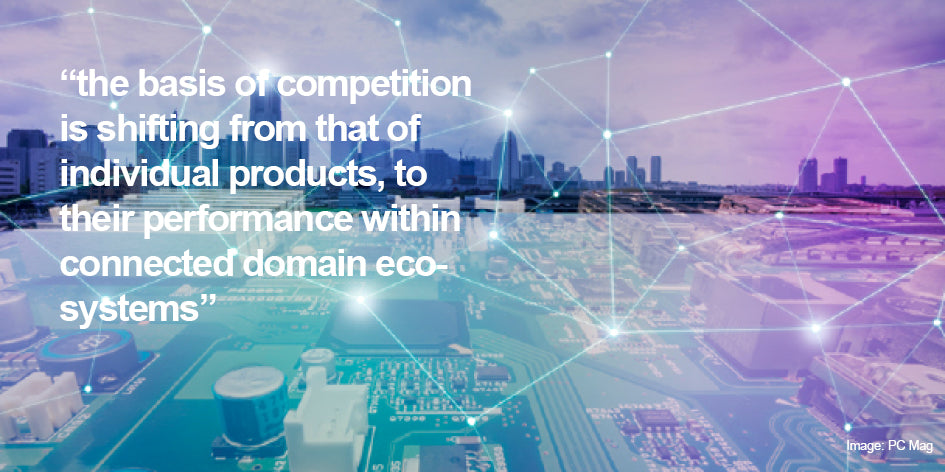At the core of the Fourth Industrial Revolution lies an explosion in the billions of things becoming connected to the internet, from smart connected products to smart infrastructure - to create the Internet of Things (IoT) or Industrial Internet.
This is the first post in series that will focus on the disruptive potential of these new smart connected products, and the concurrent advances in adjacent technologies including Artificial Intelligence, Augmented Reality, 3D Printing and Blockchain which are amplifying the scale of their transformative impact and the merging of our real and digital worlds.
The Internet of Things Enabling Smart, Hyper-Contextual Products
Smart connected products incorporate digital sensors, microprocessors and data storage within their physical form along with internet connectivity. They are variously able to monitor, control, optimise and automate operations and, with today’s cheap and easy connectivity to cloud servers, their number is growing exponentially across all industries, from home automation to heavy industry, agriculture to construction.

Disruptive Potential of IoT
The ‘big data’ generated by smart connected products is business’ new core asset, and capability in analytics the key to unlocking trapped value from the aggregation of multiple data sources within data lakes. For those who move quickly, there is opportunity to significantly expand current industry boundaries.
Cloud connectivity is decoupling the product functionality provided by software and hardware, deconstructing traditionally linear, transactional value chains, enabling asset sharing, opening up opportunities for agile, software-only players and fundamentally reshaping industries. Product features and capabilities can now be continuously upgraded and hyper-personalised to deliver enhanced value, on demand, throughout a lifetime of ownership, reducing obsolescence and enabling a more sustainable approach to consumption.
The basis of competition is shifting from individual products, to the performance of product / service systems, to their performance within domain ecosystems. The contest for the ownership of their new platforms is just beginning.
Commercialisation of IoT
Commercialisation is well advanced in automotive and aviation, but just getting started within manufacturing, where finding the financing and talent to create and support a now continuous cycle of product development and management is a challenge.
Current communications networks are also inadequate for handling the data load. 5G, with its superior data speeds, lower latency and energy consumption will be required to support security and reliability of the burgeoning number of smart connected products and realising the potential of the IoT.
Market Adoption of IoT
There are lessons to be learned from the price that society is currently paying for the ease of adoption of today’s smart devices and services. Consumers will adopt new these new smart connected products only if they are truly useful and if they entrust the manufacturer with their data. Awareness of the potential for the loss or misuse of our personal data, and the vulnerabilities of systems, has been heightened by multiple high-profile incidents.
Governments have significant concerns about national, communications and energy security for which legislation to reduce the inherent risks is only now catching up.
